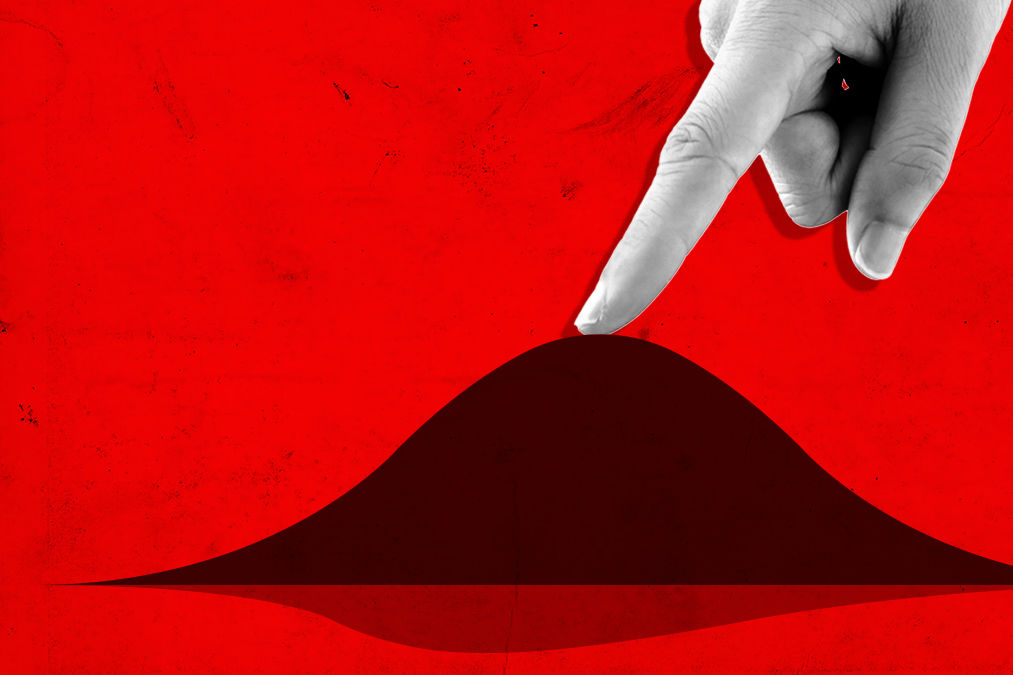It’s a Bird! It’s a Plane! It’s … Sort-of-Good News about Coronavirus in Oregon?

Don't take those masks off yet, Oregonians.
Image: Barry Savage/Shutterstock
Fingers crossed that saying this out loud this won’t jinx our entire state, but for the first time in what feels like ages, there’s reason for some cautious optimism about the trajectory of COVID-19 in Oregon.
Nearly all key indicators—case numbers, positivity rates, hospitalizations—are headed in the right direction, Rachael Banks, the public health director of the Oregon Health Authority, told reporters on Friday.
And after an agonizingly slow start to the vaccine rollout in the state, the kinks seem to be getting worked out: Oregon is meeting the 12,000 shots per day goal set by Gov. Kate Brown, Banks said, and is poised to up that total in the coming weeks, though there is plenty of controversy over Brown’s decision to prioritize educators and school staff over senior citizens in the next wave.
“For the past five days, we’ve seen the lowest daily case counts since mid-November,” Banks said. “This decline suggests we may continue to see lower numbers of new cases in the near-term future.”
The seven-day average of daily cases declined 37 percent between January 13 and January 21, Banks said. And the state now has the third-lowest rate of new cases in the nation, she added, and only 317 people in the hospital with COVID, down from 466 on January 1, suggesting a feared post-holiday spike did not really materialize. (This also puts us in line with the national curve; the New York Times reports cases are down 21 percent over the past two weeks across the entire country.)
We’re still in a pandemic, though, so let’s not get ahead of ourselves. Hundreds of people in Oregon each day are still testing positive for COVID, including 877 reported on Friday alone. Deaths—a lagging indicator, and the most painful one—are still high, with 22 more deaths in Oregon announced on Friday.
And remember, Oregon’s been here before—last May, and in most of September and October, the state’s case rate was falling, before climbing again. So it’s way, way too early to declare victory and call it a day—we could just be in a temporary lull—and therein lies the conundrum.
When case numbers go down, people also let down their guard, because they assume the virus is circulating at lower levels, which is comparatively true right now in Oregon. But—and this is an important but—coronavirus is both formidable and unpredictable, the new, more contagious variant found in the United Kingdom is already here, and relaxing of standards (less mask compliance, more hanging out indoors with people you don’t live with) can send and has sent rates shooting back up.
That’s why Banks, Brown, and other health officials continue to plead with residents to keep up the mitigation measures we’re all so familiar with, and sick of: Wear your mask, wash your hands, don’t gather unmasked and indoors.
Still, especially with vaccines now in the mix as they weren’t during previous spikes, there is a little room for optimism. How long you’ll be waiting for that vaccine is an open question—in a statement on Friday, Becky Hultberg, president and CEO of the Oregon Association of Hospitals and Health Systems, warned that expanding eligibility for the vaccine too quickly means demand could far outstrip supply in some parts of the state.
“If you are in a prioritized population in February in the Portland metro area, it is likely that you will not get a vaccine for weeks, or even months, after the date you are prioritized,” Hultberg said.
That’s grim, but Oregon Health Authority officials offered a ray of hope on Friday, saying there are early, unconfirmed reports that extra doses of the Moderna vaccine could be on their way to Oregon, boosting the state’s supply by 20 or 30 percent.




